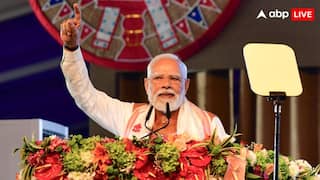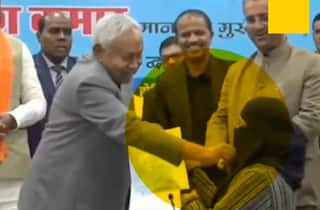Future Of Public Health: How AI, IoT Play A Role In Vaccine Distribution
The distribution of vaccines can be improved by route planning and optimisation through the use of artificial intelligence (AI) and machine learning (ML).

By Ankita Mittal
The shifting sands of technology in public health are opening promising paths for innovative solutions, particularly for the developing world. The confluence of data analytics and the Internet of Things (IoT) can be a game-changer - one that can potentially revolutionise healthcare delivery starting from immunisation efforts to ensure that life-saving vaccines reach far-off and underserved populations.
The application of real-time monitoring systems is far-reaching: the possibility of vaccine stock surveillance, prediction of outbreaks, and assessment of what populations are under-vaccinated at any given time. This modern technology offers practitioners a chance for focused interventions, assuring that the vaccines reach those in dire need worldwide.
Beyond Distribution
However, the benefits of this solution extend far beyond mere distribution: constant monitoring solutions also support return logistics, allowing the monitoring of returned blood samples to be able to quantify and make the efficiency of medicines evident. Also, such systems stipulate under which terms and conditions the returned, unused drugs can be resold, resulting in saved costs.
The distribution of vaccines can be improved by route planning and optimisation through the use of artificial intelligence (AI) and machine learning (ML). These advanced algorithms equip healthcare workers with informed decisions by route optimisation, including variables in real-time, which should be accounted for and might even include weather and traffic constraints.
Systems can integrate actionable insights from real-time data, automating and making fleet management, load management, prediction, and avoidance of delay factors easy throughout the process. With advanced delay alerts and accurate arrival times (ETAs), all recipients of critical consignments are aware of and prepared with arrival details.
E-POD — an electronic proof of delivery that captures exact coordinates — ensures that shipments reach the correct recipients. It brings transparency to the entire supply chain and, at the same time, provides much more accountability. Further, smartphone apps will arm the customer with the ability to monitor or take control of some elements of the consignment remotely — such as locking and unlocking, setting temperatures or changing them, or even assigning one-time use codes. The revolution is in the healthcare business.
From Passive To Active Participation
These tech advances translate into manifest benefits to the end consumer, extending far beyond the pale of mere convenience. Today, people can increasingly monitor their health with personalised insights, and even life-saving vaccines can reach people on time — all thanks to technology. Healthcare recipients will be moved from passive to active participants, giving them the tools and knowledge to improve their health.
Network coverage is, however, among some of the challenges to IoT solutions. The availability is limited in many areas. It is expected that such deployment would take a few years before becoming truly generalised and offering the same coverage level as today's mobile networks, especially indoors.
That understanding has now become a reality, with India launching its Digital Immunisation Registry building upon the Digital India program. This novel platform registers children's vaccination schedule and immunisation coverage by issuing unique IDs to individuals, connecting them with respective vaccination records, and finally sending reminders on the vaccine doses due to parents' mobiles. In essence, this greatly enhances vaccinations in underserved settings.
Conversely, integrating AI and ML in vaccination programmes can result in significant changes. PredicterOpt with AI can help detect the localisation of the spread of the disease, and countries can proactively and, in a pinpointed way, target the spread to increase vaccination campaigns. In addition, it would ensure that the security of the data relating to the vaccines is taken care of, given that blockchain technology may offer a secure and transparent way of tracking vaccines to build public trust.
As the future unleashes in the public health domain, this shall be the ideal alignment between AI, IoT, and vaccine delivery, ensuring an epic change in healthcare accessibility for the third world. Using such technologies can empower us all to work towards a future where no person is left behind and healthcare can be accessed by every person.
(The author is the CEO of Enhanced Innovations Pvt. Ltd)
Disclaimer: The opinions, beliefs, and views expressed by the various authors and forum participants on this website are personal and do not reflect the opinions, beliefs, and views of ABP Network Pvt. Ltd.






































